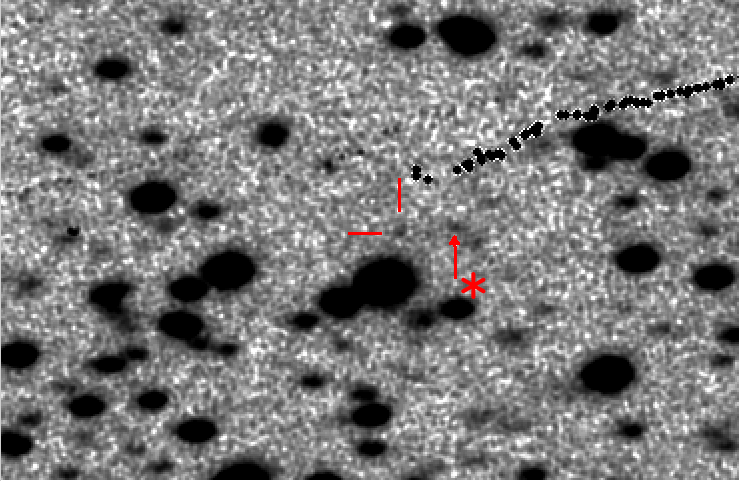
Albiorix was not discovered until 2000 and was given its official name three years later. It is a fairly small body, estimated to be only 32km across assuming it is rather dark with an albedo as low as 0.04. If it is more reflective the satellite would be even smaller. When this image was created it was predicted to be at magnitude 21.5 and at the limit of detectability.
To form the image above 62 exposures each with a 1-minute duration were taken. Albiorix is so faint that it is quite invisible on each sub-image.
The satellite was moving with respect to the background stars during this time so even when the subs were stacked with respect to the stars, the trailed image of the satellite was still not visible. When stacked on the predicted motion of the satellite, however, Albiorix shows up as a fairly sharp circular object marked with cross-lines whereas all the stars are now trailed slightly. The faint trail marked with an asterisk and an arrow is that of a star given as g=20.86 in the Gaia EDR3 catalogue.
Incidentally the almost linear feature to the right and slightly above Albiorix is the consequence of a cosmic ray muon hitting the CCD detector during one of the sub-images.
| Date and time of observation | 2020-09-14 00:00 UT |
| Telescope | 0.4m f/6.5 Dilworth-Relay |
| Camera | Starlight Xpress Trius-PRO SX814 CCD |
| Filter | None |
| Exposure | 62x1m average-stacked on predicted motion of the satellite |
| Centre of image | RA 19h52m26.7s Dec -21°42'11" |
| Image dimensions | 3.7 arcmin × 2.2 arcmin |